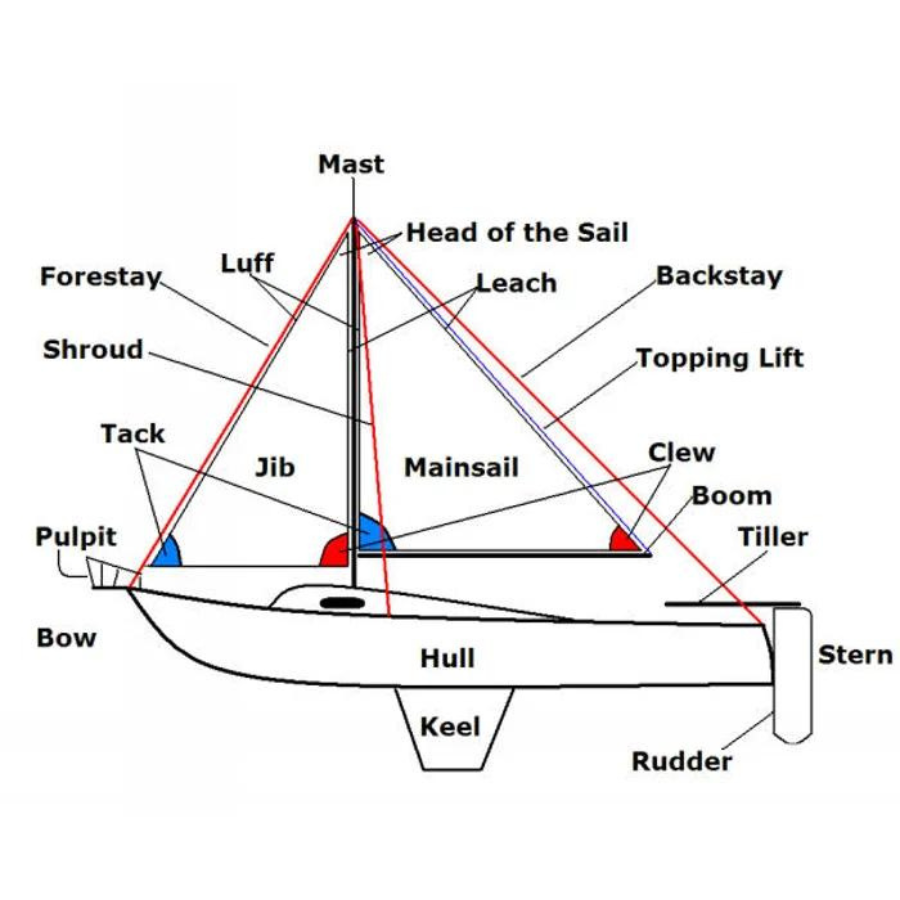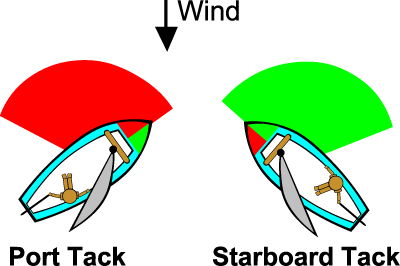Welcome all ye pollywogs and shellbacks! Whether you're a seasoned sailor or a curious newcomer, our blog is your ultimate resource for all things sailing and Newport. Set sail with us as we navigate through a sea of captivating topics, from the art of sailing to the rich history and vibrant culture of Newport, Rhode Island. Fair winds and following seas await!
Welcome
aboard
sailing
newport
history
things to do In Newport
June 24, 2024
The Ultimate Guide To Sailing Terms You Need to Know

Learning how to sail starts with first learning the proper sailing terms.
Whether you’re a beginner sailor or a sailing enthusiast, this glossary will help you feel more confident and knowledgeable on the water.
Sailing terms are not only useful but often crucial when you’re out on the water.
Sure, some boating vocabulary can seem a bit old-fashioned, but that’s part of the fun!
We’re still using words that sailors have been using for hundreds of years.
So, when you know your sailing lingo, know that you’re part of a grand tradition.
Here’s an alphabetical list of key sailing terms every budding sailor should know.
For a truly exhaustive list of sailing terms, check out NauticEd.org.
A – Z Glossary of Sailing Terms
A
- Aft: The back part of the boat. Anything towards the rear is referred to as “aft.”
- Anchor: A heavy object used to moor a vessel to the seabed.
- Apparent Wind: The wind experienced on a moving boat, which is a combination of the true wind and the wind created by the boat’s motion.
B
- Beam: The width of the boat at its widest point.
- Beam Reach: When the wind is blowing across the side of your boat.
- Bow: The front of the boat. Anything towards the front is referred to as “forward” or “bow.”
- Boom: A horizontal pole that extends from the bottom of the mast to hold the bottom of the sail.
C
- Captain: The person in command of the sailing vessel.
- Cleat: A fitting on the deck to which ropes are secured.
- Cockpit: The area where the helm is located and where the crew usually sits.
D
- Deck: The flat surface covering the hull of the boat.
- Draft: The vertical distance between the waterline and the bottom of the hull.
E
- Ease: To slacken a line or sail.
- Ebb Tide: A receding tide, moving out to sea.
F
- Fender: A cushion placed between the boat and another object to prevent damage.
- Furl: To roll up a sail neatly.
G
- Galley: The kitchen area on a boat.
- Genoa: A large foresail that overlaps the main sail.
- Gib: A triangular sail attached to the headstay.

H
- Halyard: A line used to hoist or lower a sail.
- Headsail: Any sail set forward of the mast.
- Heeling: The term for when a sailboat leans over in the water when it’s pushed by the wind. There’s nothing else like the thrill of heeling over as your sails fill and your speed picks up!
- Helm: The wheel or tiller used to steer the boat.
I
- In Irons: When a boat is pointing directly into the wind and unable to sail.
- Isobars: Lines on a weather map indicating areas of equal atmospheric pressure.
J
- Jib: A triangular sail set ahead of the mast and overlapping it slightly.
- Jibe (or Gybe): A maneuver where the boat turns its stern through the wind.
K
- Keel: The central structural base of the boat’s hull, providing stability and balance.
- Knot: A unit of speed equal to one nautical mile per hour.
L
- Leeward (or Lee): The direction away from the wind.
- Lines: Use this term instead of “ropes”.
- Luff: The forward edge of a sail or the flapping of a sail.
M
- Mainsail: The primary sail on a boat, attached to the mast and boom.
- Mooring: A permanent structure to which a boat can be secured.
N
- Nautical Mile: A distance of 1,852 meters, or about 1.15 regular miles.
- Navigation: The process of plotting and directing a course for the boat.
O
- Outhaul: A line used to tighten or slacken the foot of the sail.
P
- Point of Sail: The orientation of your vessel relative to the direction of the wind — which is crucial.
- Port: The left side of the boat when facing forward.
- Port Tack: When the wind is blowing towards the port side.
- Prow: The front part of the boat’s bow.

Q
- Quarter: The area between the bow and stern on either side of the boat.
R
- Reef: To reduce the area of the sail, usually in strong winds.
- Rig: A sailboat’s rig is its arrangement of masts, sails, and ropes: how the sails are arranged on a sailboat
- Rudder: A flat piece, usually at the stern, used for steering the boat.
S
- Starboard: The right side of the boat when facing forward.
- Starboard Tack: When the wind is blowing towards the starboard side.
- Sheet: A line used to control the angle of the sails.
- Sloop: A single-masted sailboat with a fore-and-aft rigged mainsail and a headsail.
- Stern: The back of the boat. Anything towards the back is referred to as “aft” or “astern”, or “stern of the boat”.
T
- Tack: To change direction by turning the bow through the wind.
- Transom: The flat part of the stern.
- Tiller: A lever used to steer the boat.
U
- Underway: The term for a boat that is moving through the water.
- Upwind: The direction from which the wind is blowing.
V
- Vang (or Kicker): A line or piston system used to control the angle of the boom.
- Visibility: The distance at which objects can be seen in weather conditions.
W
- Wake: The track left by a boat’s passage through water.
- Winch: A mechanical device used to adjust the tension of lines.
- Windward (or Wind): The direction from which the wind is blowing.
Y
- Yaw: The side-to-side motion of a boat.
Z
- Zephyr: A light, gentle breeze.
Conclusion
Understanding these essential sailing terms will make your next adventure on the water much more enjoyable, less confusing, and even safer.
If you’re ready to put your new terminology to use, book a sailing lesson with us and put your knowledge to work!
Leave A Comment